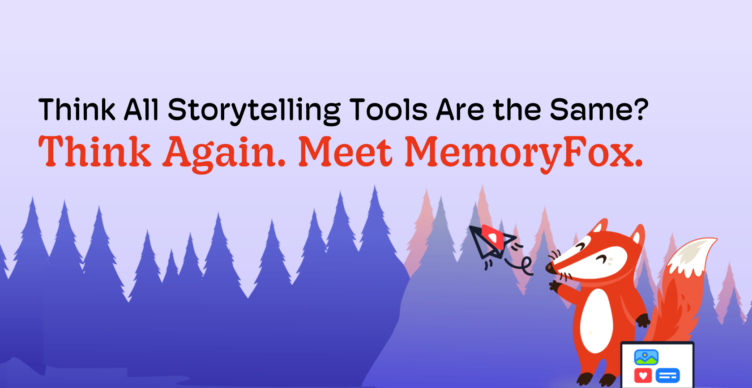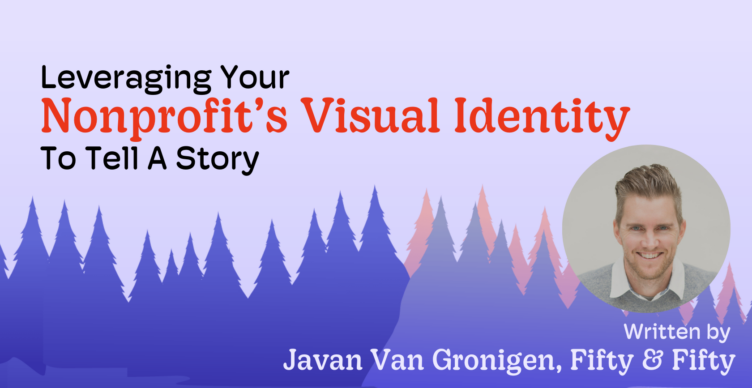4 Nonprofit Storytelling Challenges (& How to Solve Them)
Nonprofit professionals know that storytelling is the most powerful way to connect with potential donors, volunteers, and community members. In fact, Nonprofits Source found that nonprofits that effectively use storytelling in their fundraising efforts have a donor retention rate of 45%, compared to 27% for organizations that do not focus on storytelling.
But let’s be honest – nonprofit storytelling challenges are real, and they often get in the way of sharing impact stories that drive greater support and more funds raised.
If you’ve ever struggled to collect, organize, or share stories from your community, you’re not alone. Here are four of the most common nonprofit storytelling challenges, and practical ways to overcome them using MemoryFox.
1. Collecting Stories Is a Hassle & People Are Hesitant To Share
You know your nonprofit is making an impact – you see it with your own eyes on a daily basis. But getting your program staff, volunteers, or program participants to submit stories can feel impossible. You send a kindly worded email, you follow up, you post on socials… and still, your story bank is running dry.
Why it happens:
Collecting stories often relies on outdated processes like email chains, shared drives, social media tags or in-person interviews. People are busy, and the barriers to entry are too high. Or, they do not want their story shared publicly, so, out of an abundance of caution, they do not share at all.
How to fix it:
Make the story submission process as easy as possible for your community, by giving them the chance to submit from the comfort of their own home. When using a tool like MemoryFox, your storyteller is able to submit a story they are truly comfortable with, where and when they are comfortable sharing it. They simply submit a photo, video, or written testimonials directly from their preferred device using a Story Collection Campaign. No login, no apps to download, no friction.
Additionally, as part of MemoryFox’s commitment to ethical storytelling, Story Collection Campaigns include a built-in, editable consent form, where your organization can share with your storyteller exactly where you plan to share their story and for how long you’d like to use it. This transparency reduces the stress felt by the storyteller, and empowers them to submit exactly what they are comfortable sharing.
2. Keeping Stories Organized, Along With Their Consent, Is a Headache
You finally get a few stories, but now you’re digging through your inbox or a maze of folders trying to find them. And once you find a story, you’re unsure if you even have permission to use it.
Why it happens:
Most nonprofits don’t have a system in place to store and tag stories, track consent forms, or categorize by topic, location, or impact area. In fact, the 2024 Ethical Storytelling Report found that a mere 24% of nonprofit professionals feel their organization has a solid system in place when it comes to collecting storytelling consent. After all, what good is collecting a story if you’re not sure you have consent to use it?
How to fix it:
House your stories in a Story Bank, where the storyteller’s consent is always attached to the video, photo or written testimonial. You’ll never again wonder if a story is ok to use! Additionally, with MemoryFox, every submission can be sorted by campaign, story prompt, story type, user, date or customized tag. Save your precious time and energy, by letting MemoryFox keep you organized.

3. Creating & Sharing Stunning Visuals Is Too Time Consuming
Today’s attention economy demands that you have new content to share at any given moment. You’ve got great stories, but turning them into content for social media, your website, or donor communications takes hours – and the final product doesn’t always look how you envisioned.
Why it happens:
Many nonprofits rely on out-dated “rules” for social media, and believe they need to craft a highly-polished, hero’s journey, transformational story in order for it to be “good” enough to share.
How to fix it:
Prioritize authenticity, by using tools that are built for modern nonprofit communications. MemoryFox is integrated with Canva, which offers a premium subscription that is completely free to nonprofits. This means that every single video and photo that is submitted to a MemoryFox campaign will automatically appear in your Canva account – no need to download, upload and re-download.
This makes your story sharing easier than ever! Simply add your logo to a photo, crop a video to the most compelling 20 seconds, or drag and drop your story into your favorite branded template to quickly share your impact stories with the world. Remember – Authenticity is key! Avoid over-editing and use the raw content submitted by your storyteller. These video and photos perform best in today’s attention economy!
4. You Want to Collect & Share Stories Ethically – But It’s Complicated!
According to the 2024 Ethical Storytelling Report, 84% of nonprofit professionals believe that ethical storytelling is extremely important. But you didn’t need a stat to prove it.
You care deeply about the people you serve. That’s why you do the work that you do. But when it comes to storytelling, you worry about potentially exploiting or retraumatizing the very people you serve. So, you avoid the entire process.
Why it happens:
There is a traditional nonprofit storytelling strategy, often referred to as “poverty-porn”, that pressures fundraisers to share the most emotional stories they can find without considering, or in some cases actively disregarding, the impact that retelling the story will have on the storyteller. Even with the best intentions, stories shared without proper consent, representation, or context can do harm to the very communities you aim to help.
How to fix it:
Create an organization-wide Ethical Storytelling Standards Guide that outlines your organization’s commitment to ethical storytelling- including consent language, strength-based messaging to use, and deficit-based terms to avoid. This is the best way to get your entire team of staff, volunteers and board members on the same page!
Then, put your commitments into action! Use a tool like MemoryFox to craft storytelling prompts using strength-based language that ensures that your storytellers feel prideful of the message they are sharing.
And, it has been said before but it’s worth mentioning again, consent is essential to proper storytelling. Use a tool that prioritizes collecting consent prior to the story submission process. You’ll be thankful you did!
You Don’t Have to Face These Challenges Alone
Nonprofit storytelling can be hard – but it doesn’t have to be! By using a purpose-built tool like MemoryFox, you can collect stories more easily, stay organized, and share impact in a way that builds trust and strengthens relationships over time.
Ready to overcome your biggest nonprofit storytelling challenges? Schedule a demo with the MemoryFox team and see how simple and powerful ethical story collection can be.




